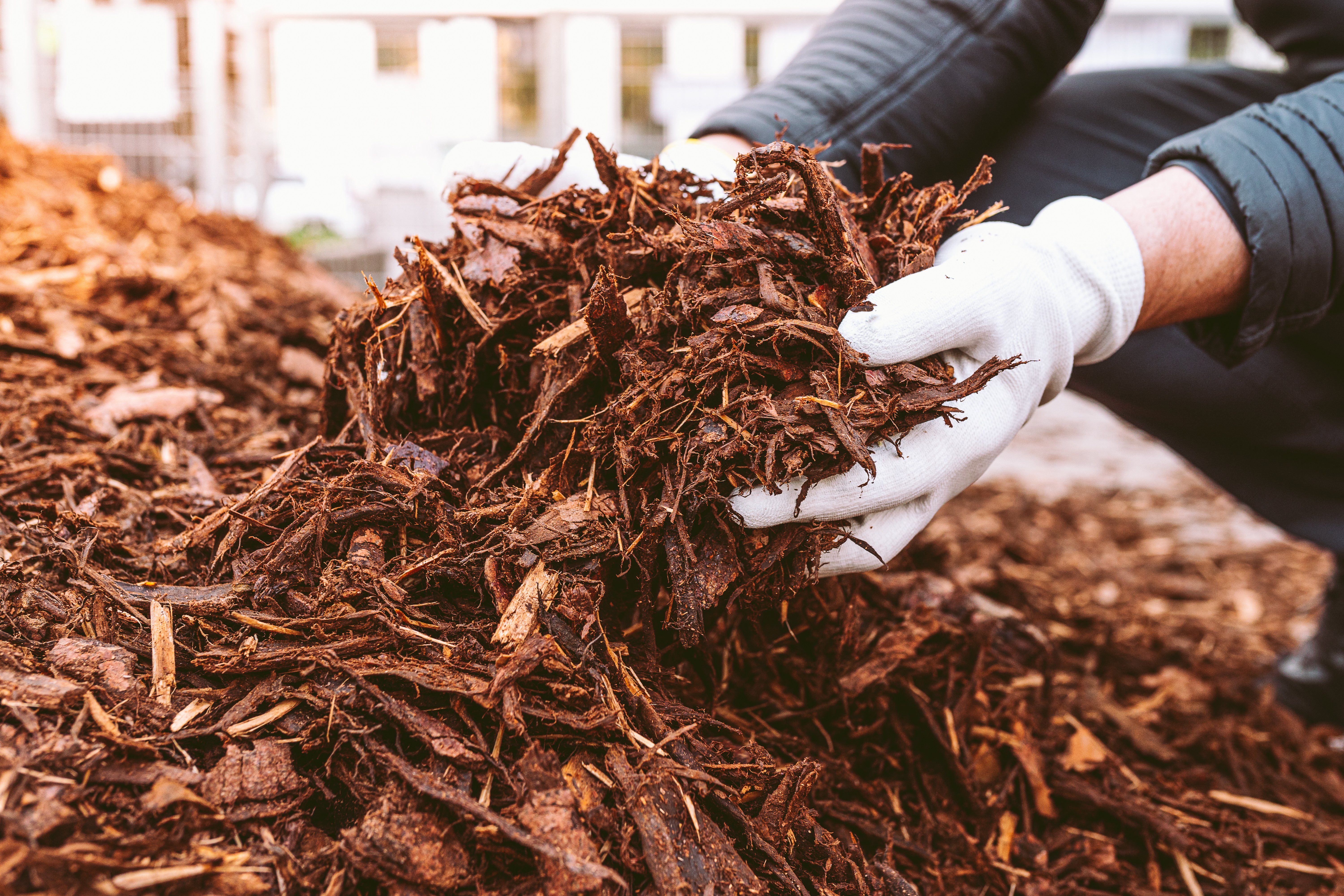Gardeners, nature lovers, and landscape enthusiasts alike usually agree fall is a beautiful season that signals the approaching dormant season. But there is still plenty of work to do as leaves fall and temperatures drop. Right now is the best time to “tuck in” planting beds for the winter and prep them for spring, especially in Oklahoma, where fall and winter weather can be tough on soil and plant roots.
In this blog, we’ll look at why winter garden prep is so important, and the steps you can take to protect and enrich your soil for a strong start next spring.
Why Fall Garden Bed Prep Matters
Just like waiting for seeds to germinate or waiting for the first buds to appear on flowers, it takes time for your soil to recover from the previous season and prepare for the upcoming one. Flowers, vegetables, and other plants get their nutrients from the soil, so it makes sense that by the time the active growing season ends, the soil could use some replenishing. You can help your beds “stock up” and give beneficial microbes and worms what they need to thrive with amendments like compost and topdressings of mulch.
Other reasons to spend a little time preparing beds for the winter season include preserving moisture and protecting soil from cold, dry air. Mulch also adds a layer of support against compaction and erosion. Finally, mulch helps regulate soil temperatures and protects the roots of plants that overwinter, whether they are dormant or remain green.
So, when is the best time to start fall prep tasks? As soon as possible!
Adding organic matter and amendments is nourishing, but only when they have adequate time to fully incorporate into the soil. The longer they’re in the ground before the new growing season starts, the more available they will be when plants need it most.
A Step-By-Step Guide to Winter Garden Prep
Preparing beds for winter is really your opportunity to get a jump start on spring planting. What follows are our top tips for winterizing most beds, but of course, always consider your specific plants and soil conditions before adding amendments or making other changes.
1. Clear and Clean Your Beds
- Remove spent annuals and weeds.
- Clear buildups of leaves and other debris to prevent pests and disease.
- Leave healthy perennials in place or trim as needed (fall is also a good time to divide many perennials, if needed).
- Note any high or low spots that need to be evened out or places with consistently poor drainage.
- If soil is compacted, consider loosening and aerating with a pitchfork or light digging.
2. Fall Composting to Enrich the Soil
- Even out the surface of the bed with a dirt rake or gently with a shovel, filling low spots with existing soil or by adding topsoil.
- Apply 2 to 3 in. of high-quality compost over the bed surface and work it in gently with a pitchfork or shovel.
Not only does compost add organic matter that feeds microbes in the soil (which in turn makes plants healthier), it adds bulk that improves drainage and airflow to roots. This is especially important with heavily clay soils, which are so common in Oklahoma. Homemade compost is a great choice, or you can save yourself considerable time by purchasing high-quality prepared compost from a supplier like Minick Materials.
3. Mulch for Garden Beds to Protect and Insulate Your Soil
- Add 2-4 inches of mulch on top of the bed, spreading it around evenly.
- If available, shredded leaves can also make a great DIY mulch. Shred them by running over a pile with a lawnmower, scooping leaves into a sturdy container, and chopping with a string trimmer, or using a leaf blower with a mulching function.
- For convenience, larger quantities of bark, shredded wood, leaf, and mulch are available from suppliers like Minick Materials (with home delivery, too!).
4. Optional Amendments for Long-Term Soil Health
- Soils that are high in clay can benefit from gypsum or perlite, especially if adding compost previously has not improved drainage and compaction problems. Before adding amendments, it’s best to consult an expert or have your soil tested by Oklahoma State Extension.
- Avoid adding sand, as this can add to compaction problems with clay soil.
- If you have perennials in beds, add a slow-release fertilizer after growth has stopped for the season but before the ground freezes. This can give plants an extra nutrition boost come spring.
Ongoing Winter Care Tips
Once your beds are prepared for the winter, your goal is to keep the mulch in place, replacing or supplementing it after periods of wind or heavy rain. Watering is not usually necessary, unless specific perennial plants require it. Keep mulch in place through winter winds.
And don’t forget to spend some time planning out next year’s bed, whether you’re browsing seed catalogs, visiting area garden centers, or exploring decorative rock, landscape glass, pottery, or other visual elements.
Get a Head Start on Spring Planting with Minick Materials
If you’ve spent the planting and growing seasons building up and improving your soil, fall and winter are the time to protect all of your hard work! Now’s the time to clean up, nourish, and topdress beds, so they’re ready to grow in the coming months. Order your compost and mulch in bulk today, and get your garden ready for winter. Contact Minick Materials for expert advice, soil blends, mulch, and more!








![All About Soil Compaction: Causes, Challenges & Solutions [A Guide]](https://www.minickmaterials.com/hs-fs/hubfs/Imported_Blog_Media/plants-2411458_1920-1024x683.jpg?width=725&name=plants-2411458_1920-1024x683.jpg)
.webp?width=725&name=AdobeStock_462076409%20(1).webp)